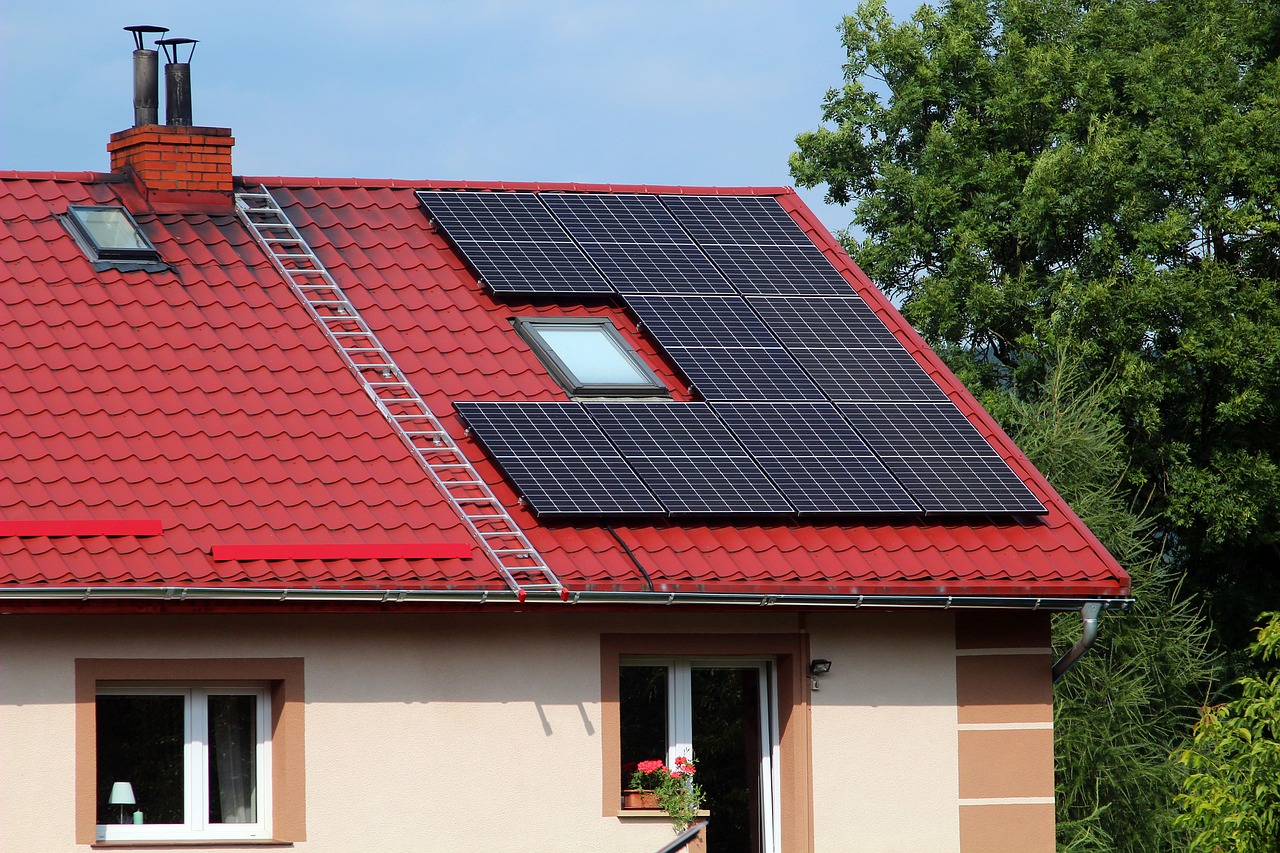
Solar Panel Lifespan: How Long Do They Last and How to Extend It
As the world shifts toward renewable energy, solar panels have become a popular choice for homeowners and businesses looking to reduce energy costs, minimize their carbon footprint, and move toward energy independence. While solar panels are designed to last for decades, understanding their lifespan and knowing how to extend it is crucial to maximizing your investment. This article will dive into how long solar panels last, factors that influence their longevity, and practical tips to ensure your system performs optimally for years to come.
1. Understanding Solar Panel Lifespan
Average Lifespan of Solar Panels
Most modern solar panels come with warranties guaranteeing their performance for 25 to 30 years. However, this doesn’t mean the panels stop working after the warranty period ends. Instead, they continue to produce electricity, but their efficiency gradually declines over time. On average, solar panels experience an annual degradation rate of 0.5% to 1%, meaning that by the end of their warranty period, they may still produce 80% to 90% of their original capacity.
Performance Decline Over Time
While solar panels are built to be durable, their ability to generate electricity decreases gradually due to exposure to the elements and general wear and tear. This decline is referred to as the "degradation rate." For example, if a solar panel degrades at a rate of 0.8% per year, after 25 years, it will produce around 80% of the energy it did when it was first installed. This reduction in efficiency is a natural part of solar panel aging, but panels continue to function for many years after reaching the end of their warranty.
Factors Affecting Solar Panel Lifespan
Several factors impact how long your solar panels last, including:
- Panel Type: The type and quality of solar panels you install affect their longevity. Monocrystalline panels tend to have lower degradation rates and last longer than polycrystalline or thin-film panels.
- Installation Quality: Proper installation is crucial to the long-term health of your solar panels. Poorly installed systems are more prone to damage and inefficiency over time.
- Climate and Environment: Panels in extreme climates, such as very hot or cold regions, or those exposed to harsh weather conditions, may degrade faster. Similarly, areas with high levels of pollution, dust, or saltwater exposure (such as coastal regions) can contribute to faster wear and tear.
- Maintenance and Care: Regular maintenance, such as cleaning, inspections, and monitoring, plays a significant role in prolonging the lifespan of your solar panels.
2. Key Factors That Influence Solar Panel Longevity
2.1. Quality of Solar Panels
One of the most significant factors determining solar panel lifespan is the quality of the product. Higher-quality solar panels are more durable, experience slower degradation rates, and perform better over time compared to cheaper, lower-quality options. When choosing solar panels, consider those with better warranties and proven performance data.
Monocrystalline vs. Polycrystalline Panels:
Monocrystalline panels, known for their high efficiency and sleek appearance, generally have longer lifespans and lower degradation rates compared to polycrystalline panels. Polycrystalline panels are less expensive but may degrade faster and lose efficiency more quickly over time.
2.2. Weather Conditions
Extreme weather conditions, such as hailstorms, high winds, heavy snowfall, and scorching heat, can accelerate the wear and tear on solar panels. While solar panels are designed to withstand a range of weather conditions, consistent exposure to these elements can cause micro-cracks or delamination, leading to performance issues.
Impact of UV Exposure:
Solar panels are exposed to UV radiation daily, which can gradually degrade the materials within the panel, leading to lower energy production. Panels in regions with high solar irradiance may experience a slightly faster degradation rate than those in more temperate climates.
Hail, Wind, and Snow Damage:
Solar panels are typically built with tempered glass that can withstand impacts from small hailstones. However, extreme hail or debris carried by strong winds can damage the surface, leading to performance problems or necessitating repairs. Similarly, heavy snow accumulation can add weight to the panels and potentially cause physical stress to the mounting structure.
2.3. Installation and Orientation
Proper installation is essential to ensure that your solar panels last as long as possible. Poor installation can lead to water damage, electrical issues, or physical damage to the panels. A well-installed system will have adequate ventilation, which helps regulate panel temperature and prevent overheating.
Orientation and Tilt:
Solar panels should be positioned to receive the maximum amount of sunlight throughout the year. If panels are installed at the wrong angle or in a shaded area, they may not perform optimally, leading to a faster decline in efficiency.
Mounting System:
The quality of the mounting system used to secure your panels to your roof or ground installation plays a role in their longevity. A sturdy, corrosion-resistant mounting system will ensure that your panels remain securely in place and are protected from weather-related damage.
3. Extending the Lifespan of Solar Panels
Although solar panels are relatively low-maintenance, there are several steps you can take to ensure they last as long as possible and maintain high efficiency. Here are some tips to extend the lifespan of your solar panels:
3.1. Regular Cleaning
Dirt, dust, bird droppings, pollen, and debris can accumulate on the surface of solar panels, reducing the amount of sunlight they absorb and decreasing their efficiency. Regular cleaning, especially in dusty or polluted areas, ensures that the panels are always operating at maximum capacity.
How to Clean Solar Panels:
- Use a soft sponge or cloth with water and mild soap to gently clean the surface.
- Avoid harsh chemicals or abrasive materials that can scratch or damage the panel.
- Rinse with water to remove any soap residue.
- Perform cleaning in the early morning or late evening to avoid causing thermal stress to the panels during peak sun hours.
3.2. Routine Inspections and Monitoring
Inspecting your solar panels regularly helps identify potential problems before they escalate. Look for signs of wear such as cracks, discoloration, loose connections, or damage to the mounting system.
Use a Monitoring System:
Many modern solar systems come equipped with monitoring software that tracks energy production and alerts you to any sudden drops in performance. This allows you to quickly identify and address issues that could affect panel efficiency or longevity.
3.3. Protecting Panels from Weather Damage
While solar panels are designed to withstand a range of weather conditions, additional protective measures can be taken to ensure they last longer.
Hail Guards:
In areas prone to hailstorms, consider installing hail guards or covers during storm seasons to protect the surface of your panels from impact.
Proper Snow Removal:
In regions with heavy snowfall, ensure that snow is cleared from your solar panels to prevent excessive weight and potential damage. Use a soft-bristle brush or a snow rake designed for solar panels to remove snow safely.
3.4. Ensuring Proper Ventilation
Solar panels generate heat as they convert sunlight into electricity. Ensuring that the panels have adequate ventilation helps prevent overheating, which can accelerate degradation. This is especially important for rooftop installations, where panels may be exposed to high temperatures during summer months.
3.5. Addressing Shading Issues
Shading from trees, buildings, or other obstructions can significantly reduce the efficiency of solar panels. Over time, even small amounts of shading can lead to performance issues and a faster degradation rate.
Tree Trimming:
Regularly trim trees near your solar installation to prevent branches from blocking sunlight. Ensure that no new growth obstructs the panels during peak sun hours.
3.6. Preventing Electrical Issues
Loose wiring, faulty inverters, and damaged connections can lead to performance drops and may reduce the lifespan of your solar system.
Check for Electrical Problems:
Regularly inspect the wiring and electrical connections of your system, especially if you notice sudden drops in energy production. If you suspect an issue, consult a solar technician or licensed electrician for repairs.
4. Replacing or Upgrading Solar Panels
At some point, even well-maintained solar panels will degrade to the point where replacing them becomes more cost-effective than continuing with reduced performance. Typically, this occurs after 25-30 years, when efficiency drops below 80% of the original capacity.
When to Replace Solar Panels
- Severely Reduced Efficiency: If your solar panels are producing significantly less electricity than when they were first installed, it may be time to replace them.
- Physical Damage: Cracks, chips, or other physical damage to the panels can warrant a replacement, especially if repairs are not feasible.
- Outdated Technology: As solar technology advances, newer panels may offer higher efficiency, better performance, and improved durability. Upgrading to a newer model may be a worthwhile investment if your current system is no longer performing optimally.
Recycling and Disposal of Old Panels
When the time comes to replace your solar panels, proper disposal or recycling is essential to minimize environmental impact. Many manufacturers and recycling facilities accept old solar panels for recycling, where materials such as glass, silicon, and metal can be recovered and reused.
Conclusion
Solar panels are a long-term investment designed to provide clean, renewable energy for decades. While they typically last 25-30 years, understanding the factors that influence their lifespan and taking steps to extend it can help you maximize their performance and longevity. Regular maintenance, routine inspections, and proper care can ensure your solar panels continue to generate electricity efficiently and reliably for many years.
By following these maintenance tips and addressing potential issues early, you can protect your investment, reduce the risk of costly repairs, and enjoy the financial and environmental benefits of solar power for the long term.
